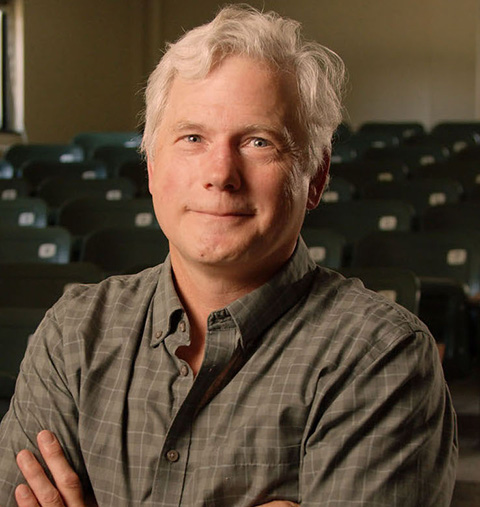Parsing plant pigment pathways
Flavonoids are plant-derived secondary metabolites that protect plants from pathogens, parasites and abiotic stress, such as extreme weather and temperatures — they essentially act as the plants’ immune system, said Erich Grotewold, former chair of biochemistry and molecular biology at Michigan State University. Grotewold also serves on the editorial board of the Journal of Biological Chemistry.

“Let’s not forget that plants can’t move when their environments get uncomfortable,” Grotewold said, emphasizing the importance of plant specialized metabolic pathways and products.
Flavonoids are a component of the phenylpropanoid biosynthesis pathway. They were once colloquially known as “Vitamin P” for their antioxidant properties, and their production and sales contribute over a billion U.S. dollars every year to the global economy. While not all flavonoids are pigmented, these molecules produce pigments that give flowers their deep, rich colors.
“Flavonoids have contributed (to what) we understand as modern genetics today,” Grotewold said. Indeed, flavonoid studies from the 1980s led to the discovery of the “jumping genes,” short segments of DNA that can move from one genomic location to another, and RNA interference, which is now a common tool in research and biotechnology.
Grotewold was this month’s speaker on ASBMB Breakthroughs, a webinar series highlighting research from American Society for Biochemistry and Molecular Biology journals. During his talk, sponsored by JBC, he shared his discovery that flavonoid gene regulation is controlled by the interaction between transcription factors, rather than their DNA-binding specificity.
“My journey into plants started by trying to figure out how (the two branches of the flavonoid biosynthesis pathway), which involve the same DNA-binding domain and in some regards, very similar compounds, are differentially regulated,” said Grotewold.

In corn, the flavonoid biosynthesis pathway forks into two branches: one forms phlobaphenes, a pigment that is unique to grass plants, and the other, anthocyanins, which are more widely distributed throughout the plant kingdom. These branches are regulated by the transcription factors P1 and C1, respectively. However, Grotewold explained, both P1 and C1 contain the same DNA-binding domain, known as MYB, and thus have very similar DNA-binding specificities.
Genes in the anthocyanin biosynthesis pathway are regulated by the physical interaction between the MYB domain on C1 and another transcription factor called R. Grotewold found that six amino acids on C1, four of which are on the solvent-exposed surface of MYB, confer C1’s specificity for R. When Grotewold substituted the amino acids at these positions on P1 for those found on C1, the modified P1 protein gained the ability to interact with R and activate the anthocyanin pathway.
Grotewold and his colleagues showed that R can act as a “regulatory switch” — the configuration of one of R’s domains, called ACT, can determine whether it interacts with MYB, and subsequently, which genes are being targeted and which pathways activated. This indicated that gene regulation in flavonoid biosynthesis depends on the interaction between transcription factors, not DNA binding specificity, Grotewold said.
“We now know that this six amino acid motif that we initially found in C1 regulates a lot of different processes in plants, even beyond the formation of anthocyanin pigment (the pathway’s end-product in corn),” he added.
More recently, Grotewold’s team has been studying flavonoid biosynthesis in Arabidopsis thaliana, a small flowering plant in the mustard family. They found that naringenin chalcone, one of the pathway intermediates, can interact with and stabilize ultraviolet-B receptor protein, or UVR8, in a UV-independent manner. Grotewold said that he found this surprising not only because UV-independent functions of UVR8 were previously unknown, but also because it suggested that naringenin chalcone may be more important than once expected.
“We typically ignore pathway intermediates because we think of them as biologically inactive,” Grotewold said, “But we saw that they can have very important regulatory activities.”
Up next

TBD
June 18, 2025 12:15–1 p.m. Eastern
Ileana Cristea of Princeton University will present her research on using mass spectrometry to study viruses.
Enjoy reading ASBMB Today?
Become a member to receive the print edition four times a year and the digital edition monthly.
Learn moreGet the latest from ASBMB Today
Enter your email address, and we’ll send you a weekly email with recent articles, interviews and more.
Latest in Science
Science highlights or most popular articles

Exploring the link between lipids and longevity
Meng Wang will present her work on metabolism and aging at the ASBMB Annual Meeting, March 7-10, just outside of Washington, D.C.

Defining a ‘crucial gatekeeper’ of lipid metabolism
George Carman receives the Herbert Tabor Research Award at the ASBMB Annual Meeting, March 7–10, just outside of Washington, D.C.

The science of staying strong
Muscles power every movement, but they also tell the story of aging itself. Scientists are uncovering how strength fades, why some species resist it and what lifestyle and molecular clues could help preserve muscle health for life.

Bacteriophage protein could make queso fresco safer
Researchers characterized the structure and function of PlyP100, a bacteriophage protein that shows promise as a food-safe antimicrobial for preventing Listeria monocytogenes growth in fresh cheeses.

Building the blueprint to block HIV
Wesley Sundquist will present his work on the HIV capsid and revolutionary drug, Lenacapavir, at the ASBMB Annual Meeting, March 7–10, in Maryland.

Gut microbes hijack cancer pathway in high-fat diets
Researchers at the Feinstein Institutes for Medical Research found that a high-fat diet increases ammonia-producing bacteria in the gut microbiome of mice, which in turn disrupts TGF-β signaling and promotes colorectal cancer.

